Some time ago, I was walking down West 55th Street in midtown when I happened to notice a peculiar building near Seventh Avenue…
This three-story structure, nestled in between the towering brick pre-war apartments that line the block.
There was almost an abandoned feel to it, with flaking paint giving way to the brick underneath…
On the second floor, a row of arched windows with panes blacked out by soot and grime:
On the third floor, the remains of this very strange door/hatch…
A closer look. Note the plant life growing from the building:
And beside it, this unusual skylight:
Finally, if you look really closely, you’ll even find a few miniature dragons set into the facade:
Yet from the ground floor, it seems almost like nothing more than a loading dock:
As it turns out, this is the last remaining stable from a time when West 55th Street would have been lined with private carriage houses, built by Fifth Avenue’s wealthiest residents to serve their transportation needs.
The stable at 154 West 55th Street was built in 1888 by Charles T. Barney, a wealthy banker who would later become president of the Knickerbocker Trust Company. Barney already had several stables across the street, and had had success in renting out the upper floors as studio space for artists. Known as The Holbein Studios, they were at times home to such artists as John Singer Sargent, impressionist painter Childe Hassam, and portrait artist Cecilia Beaux.
The stable at 154 West 55th Street was the last to be built, and the only one designed specifically with artists in mind. The second floor apartment was reserved for the coachman, while the skylit third floor was divided into four studios.
As time passed, the other stables were torn down to make way for apartment buildings. Miraculously though, 154 West 55th Street managed to survive into the late-1920s, when it was converted into a movie theater. By the 1970s, it was operating as the 55th Street Playhouse, showing art house movies and retrospectives. Andy Warhol in particular had numerous runs here over the years.

Then, in the late 1980s, the stable-turned-studio-turned-movie-theater found itself in danger of demolition to accommodate a truck entrance for the new hotel going up on West 54th Street. Though it had been suggested as a candidate for landmark protection, it had never received the designation (and still hasn’t).
Ultimately, the developers decided to just gut the first floor for use as a truck entrance, leaving the rest intact. As I mentioned, these pictures were taken some time ago; the property has since been given a fresh coat of paint and looks in somewhat better shape.
But I’m still wondering: what the heck is this strange arched doorway on the third floor…
…and what’s in those two upper floors today?
-SCOUT
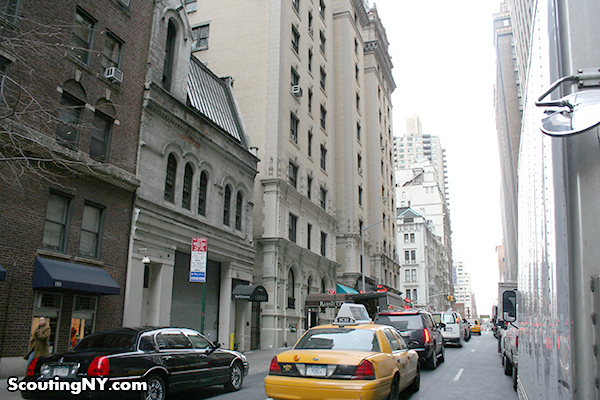
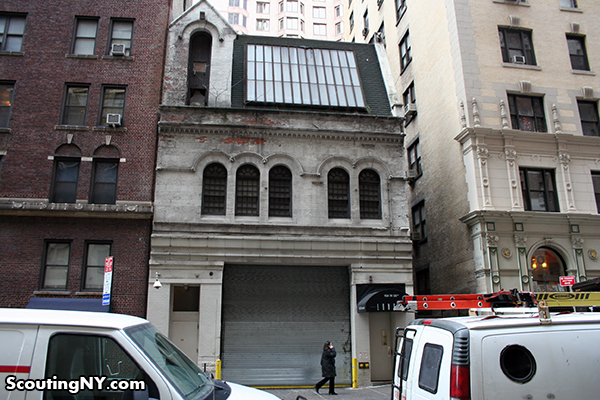
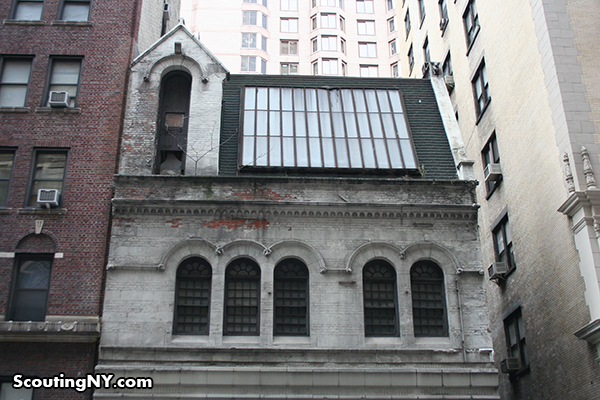
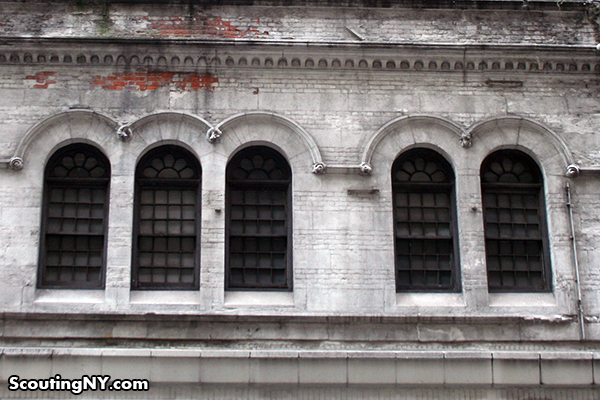
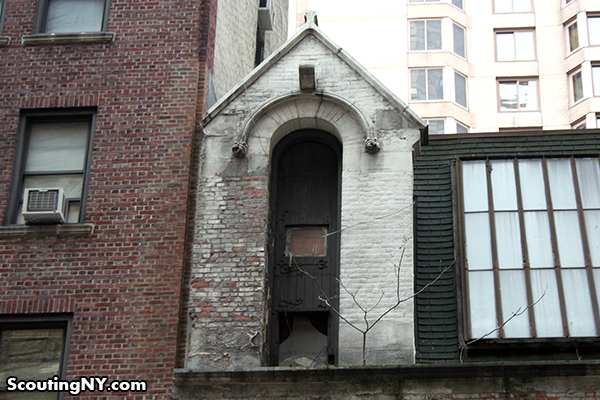


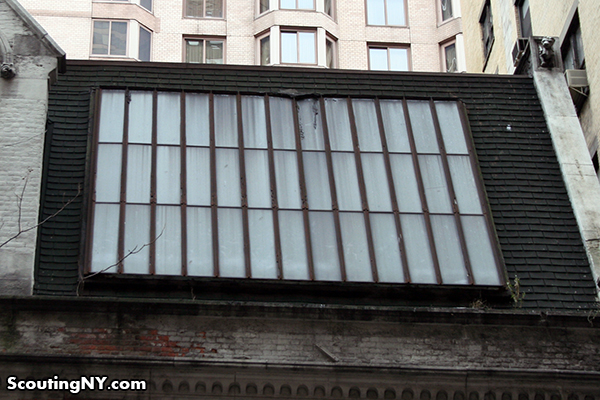
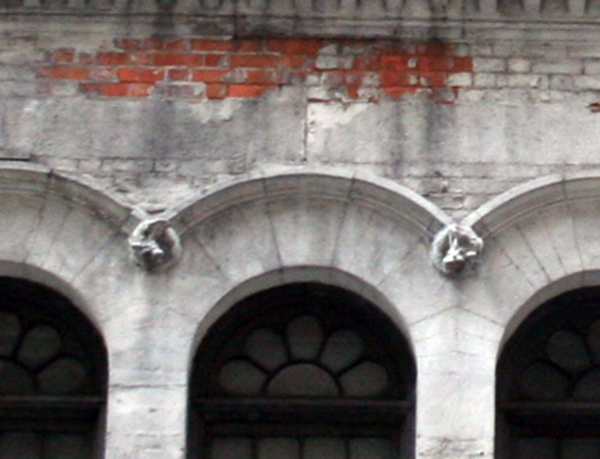
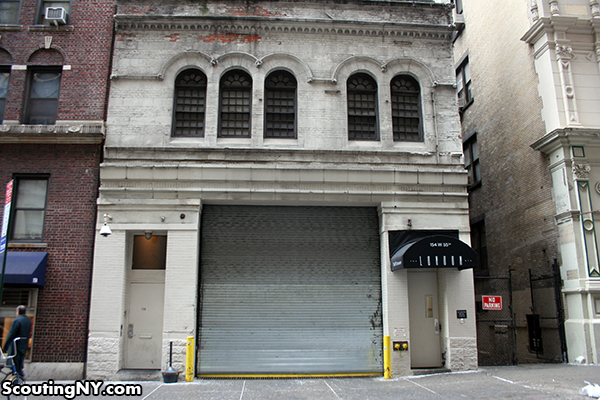
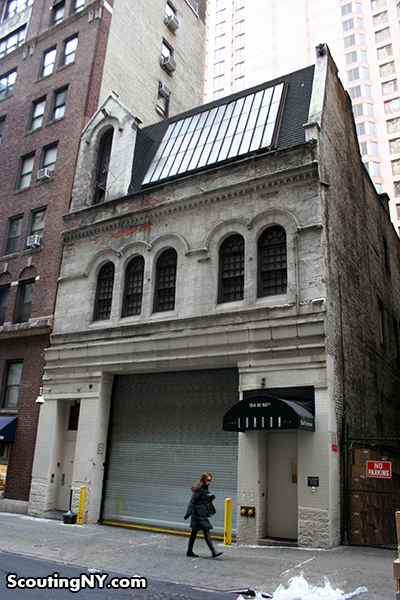
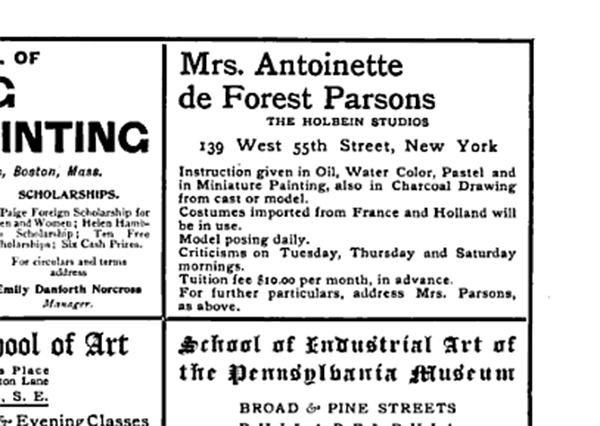
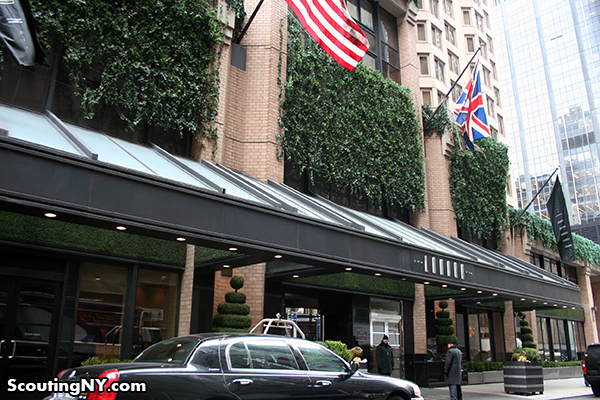


Not unusual for a stable to have a hay loft with an opening like that. But it seems needlessly high up unless it was above the apartments. (Not sure I’d want to live with a stable below and the hay above.)
Since I live in farm country here, many farms have a hay loft door with some sort of contraption – hooks or a conveyor belt to get the hay bales up there for storage. That’s what it looks like to me.
How I wish it could be designated a landmark – if not that, what!!!???
Please try to get inside those two top floors and show us whats up there!
Maybe contact the Hotel?
That “door” up there looks more to me like a ramp, and one that could be flipped down quickly, at that. From the unusual size of it, it was intended for objects about five to six feet long, that could be slid down the ramp, to drop into a large bin below. What you have to check out, Nick, is if a barber named Todd ever lived up there. Was there ever a meat pie shop next door? Too complicated to explain in this comment box. Just a hunch.
HA! Maybe you’re right!!
Horses need hay, which needs a loading door to its storage, usually on upper floors above horse and carriage areas. A block and tackle for getting hay/feed up to 3rd floor door might have been on a beam in the spot over 3rd floor door which now sports some ornament, or, an iron ring may have been mounted on the ornaments underside.
Agree that it is a block and tackle door for haybales/feed. See the large post above the doorway, it has been cut back but probably used to extend out 4-5 feet. These used to be more common in buildings for bringing in furniture or anything else heavy. I just saw my first one a few weeks ago.
Could the door be for removing large canvases from the studio without carrying them down 2 narrow flights of stairs?
Hi. I agree about the hayloft theory. Hay is kept above the animals because they used gravity to pitch hay into the feeders below. Also, the hay itself needs good ventilation, which is why hay was always kept above the livestock. Given that they probably housed carriages inside their carriage house, those were probably elevated to the second floor by an elevator on the inside. I’d be curious to know if that street remains at the original elevation, or if there’s another story underneath the street?
It’s definitely some sort of Victorian / Proto-steampunk Freight elevator!
Odd that there is no Google Streetview* directly outside – it looks like it have been removed by request.
*and also Bing’s ‘Potato strapped to an Oldsmobile’ excuse for Streetview.
my great uncle was a coachman here on 55th street in the employ of a judge until he disappeared under “mysterious” circumstances in 1891. Story was in the NYC papers possible due to the celebrity of his employer.
Wow! Mary, this site is becoming an invaluable resource for scholars of NYC. This place is connected with a once famous case? What were the names so people can follow up?
Not sure how famous a case this was outside the family but the employer’s name was Noah Davis and my missing uncle was Alfred Barnard. I believe Mr. Davis was a lawyer/judge. I have a few clippings from the event.
Future scholars will thank you for the information. If you Google Alfred Barnard Noah Davis you will find a paragraph on Alfred Barnard’s disappearance in the May 12, 1891 The New York Times. “Last Tuesday he told his wife, to whom he has been married only about five weeks, that he had received a letter requiring him to go to Sing Sing on urgent business. Instead of going to Sing Sing he went to Tarrytown, where he drew a balance of $500 from a savings bank, whence he took a train back to New York. Since that time he has not been seen.” If you just look at inflation, that would be #13,400 but a truer estimate of what he took out, in terms of what Alfred Barnard could buy with it, would have been anywhere from $66,800 to $111,000. Plainly, it was a life savings for a coachman. Suspicious indeed. Judge Noah Davis is a very interesting man, one of the founding trustees of Barnard College only two years earlier, along with Mrs. John D Rockefeller and Jacob Schiff and other heavyweights. Higher education for women was still a radical idea. Good for Judge Davis. Thanks, Mary.

Thanks for the additional detail, other articles said they couldn’t confirm whether he boarded the train back. No evidence that he was heard from again. My aunt returned to Ireland, had a baby and was back in Nyc . Remarried 7 years later to another coachman.
N Y Times article from 1987 on Holbein Studio
http://www.nytimes.com/1987/12/20/realestate/streetscapes-holbein-studio-art-came-alive-over-a-stable.html
Thanks for this. Just a couple of additions to what you wrote. This became a movie theater in 1927, converted by the great architects Treanor & Fatio. It was the site of the U.S. premieres of many classics, including Gance’s “Napoleon” (1929, cut down to about a fifth of its original length!) and Cocteau’s “Orpheus” (1950). Around 1955 it was bought by Bryant Haliday and Cyrus Harvey, soon to begin Janus Films, for which the 55th Street Playhouse was a showcase (Fellini, etc.). After they sold Janus in the 1960s, the theater switched to martial arts films and then gay porn.
Quite a trajectory. I know Mayor de Blasio doesn’t mean to repeat it, but his policies were tried once before, for decades, and much of this website involves digging out what survived them.